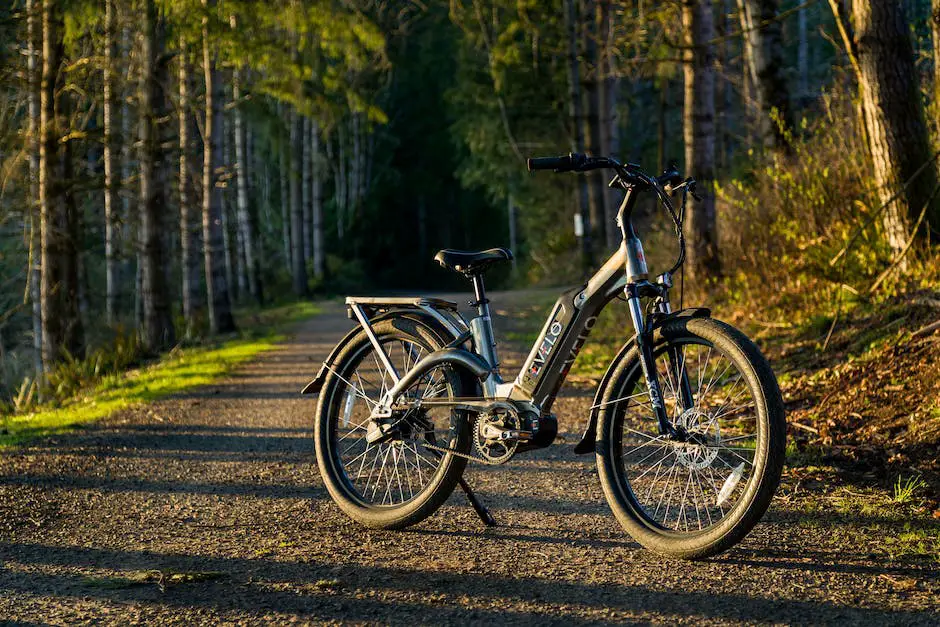Fishing and biking – two passions that, when combined, create an extraordinary duo in the great outdoors. As an introduction, let’s dive deep into the remarkable world of electric bikes, or E-Bikes – exploring their various types, working mechanisms, and critical considerations regarding battery life, durability, and stability, especially when used for fishing. To ensure safety while balancing both hobbies, it’s vital to understand essential biking rules and riding techniques alongside our fishing rods. Moreover, this fascinating intersection of sports requires a keen understanding of various fishing techniques such as surface fishing, fly fishing, bottom fishing and how they can be uniquely adapted to fishing from an E-bike.
Electric Bike Basics
Essential Features for Your Perfect Outdoor Fishing Electric Bike
Hey there, fishing enthusiasts! If you’re an aficionado of outdoor fishing like so many of us are, and you’re looking to blend your love of angling with a passion for biking, you may have thought about investing in an electric bike. Electric bikes offer a whole new dimension of outdoor fishing experiences by facilitating longer, more flexible trips. But what features should an electric bike possess for optimum outdoor fishing utility? Well, you’re in luck! Below are some essential characteristics to consider when on the lookout for your perfect outdoor fishing e-bike.
- Strong Battery Life
- Multiple Speed Settings
- Integrated Storage Solutions
- All-terrain Compatibility
- Comfortable Seating
- Waterproof Design
- Strong Lighting
Venturing out into the great unknown for some serene fishing is all about enjoying the outdoors and the thrill of the catch. But what happens when the battery runs out halfway through the ride? That’s right – it’s a real buzzkill. Hence, it’s crucial for an outdoor fishing e-bike to have a strong and long-lasting battery life. Look for a model that offers at least 40-60 miles per charge depending on how far you plan to travel.
Different terrains require different speed settings. A good fishing electric bike should have versatile speed options. Being able to adjust the speed accordingly can make the uphill and downhill journey more manageable and safer.
Taking fishing equipment along on an outdoor adventure can be a challenging task. The e-bike used for such trips must therefore have integrated storage solutions like baskets, attached coolers or even trailers. Such facilities tend to simplify the transportation of fishing gear and caught fish without the need to carry extra bags.
Most angling hotspots might not necessarily fall along well-paved roads. An ideal fishing e-bike should tackle a variety of terrains, be it off-road trails, grasslands, or steep hills. This feature will be especially helpful for enthusiasts who love exploring different fishing locations.
When using an electric bike for outdoor fishing, you’re likely to spend a considerable amount of time traveling. A comfortable and adjustable seat plays a vital role in ensuring a relaxed journey. Look for an e-bike model that prioritizes ergonomic designs and comfortable seating options.
While this might seem obvious, not all E-bikes are designed with waterproofing in mind. Given that they’ll be frequently used around bodies of water, it’s important for an outdoor fishing e-bike to possess a robust waterproof design to prevent any electrical damage.
Whether you’re gliding along familiar trails or exploring new spots, having a robust integrated headlight and taillight will keep you safe during the dusk and dawn hours. You might end up extending your ride due to a far-off fishing spot or an adventurous impulse; in such cases, a powerful light system will be incredibly helpful.
So, whether you are new to this fantastic blend of biking and fishing or already a pro, keeping these features in mind when hunting for your new ride should enhance your entire outdoor fishing experience. Happy riding and tight lines!

Fishing Techniques Adapted for E-Bikes
Adapting Traditional Fishing Techniques to E-Bike Fishing Adventures
As ardent outdoor adventurers dive deeper into the niche of e-bike fishing, a seamless fusion of traditional strategies with modern tech-savvy methods is revealed. Let’s delve deeper into the integration of old and new, highlighting ways to adapt classic fishing techniques to the E-bike scene.
For starters, let’s talk about Mobility. E-bikes offer an unparalleled range of movement, granting anglers the freedom to quickly switch locations based on fish behavior or changing weather conditions. Experienced fishing enthusiasts take advantage of this flexibility, likening the strategy to “Run and Gun” ice fishing – jump around different spots until you find a prosperous catch. However, with an E-bike, you can do this with environmentally-friendly flair, minimal noise, and faster pace.
Next, consider Pole Position. No, not the racing kind! Traditional fishing necessitates ideal positioning of your fishing pole for optimal results. An E-bike can be enhanced with a sophisticated fishing rod holder setup, fitted right on the frame. Some holders have swivel action, enabling effective casting and reeling, much akin to old-school kayak fishing.
Look at your E-bike as an instant Fish Finder. While electronics like GPS, SONAR, and underwater cameras have revolutionized how we fish, not everyone can afford them or wants to manage all the tech fuss. This is where your E-bike comes in. Use your mobility to identify promising locations; shallow, vegetated areas for bass, or rocky river banks for trout. This works wonders, reminiscent of ‘reading the water’ techniques in traditional fly fishing.
Gone are days of lugging around a cooler or struggling with maintaining live bait. Your E-bike can be designed with High-Tech Coolants and Live Well Systems. A nostalgic nod to the timeless strategy of live bait or fresh catch preservation, these tech-infused adaptations keep your bait lively, and catch fresh, until you return home.
Drawing from the fundamentals of Drift Fishing, try using a E-bike to Freewheel Downwards with the Current. Use the momentum of the river or stream to coast on your bike with a dragged bait, creating a similar effect as drift fishing in a boat.
Lastly, employ Stealth Techniques with your E-bike. Unlike motorboats or cars, E-bikes are nearly silent, and their electric power leaves no scent trail. Use this quiet approach to arrive unannounced at your fishing spot, emulating the principle found in traditional stalking fishing methods.
An E-bike breathes new life into yesteryear’s fishing techniques, helping you enjoy your pastime with a novel blend of nostalgia and innovation. It’s more than just a fishing tool; it’s a portal to nature, the camaraderie of anglers, and the sportsmanship of sustainable fishing. So gear up, fellow enthusiasts, because it’s time to pedal towards your next big catch!

Ideal Outdoor Locations for E-Bike Fishing
Immersive Environments: Saltwater Flats and Freshwater Lakes
From saltwater flats to freshwater lakes, e-bike fishing is flexible enough to adapt to a variety of environments. Admittedly, these locations don’t offer the same challenge as fly fishing in a fast-moving river, but saltwater and freshwater bodies host an abundance of species. Transportation is key here, as some fish are found far from the shoreline, requiring long and strenuous paddle boarding or kayaking. However, with an e-bike, one can effortlessly cover vast distances, both when casting from the shore and when returning with a big catch!
Rugged and Remote: Forest Streams and Rural Rivers
Rocky trails leading to forest streams or rural rivers are no challenge for all-terrain compatible e-bikes. The reward? Private and undisturbed fishing spots full of numerous species that are seldom seen in crowded areas. In these scenarios, the subtler approach of an e-bike shines. Silent, scentless, blending with its surroundings, it allows access to the fishing spot with minimal disturbance, crucial to fishing in natural environments.
Accessible Angling: City Canals and Urban Waterways
Remote locations offer privacy and a wealth of species, however, urban anglers can utilize e-bike fishing to follow city canals and urban waterways for some surprisingly good catches. Furthermore, they also offer opportunities to engage with local communities, develop fishing partnerships, promote responsible fishing etiquette, and set the pace for sustainable urban angling.
Seasonal Opportunities: Ice Fishing Lakes
For those brave enough to venture into winter wonderlands, frozen lakes offer unique opportunities for ice fishing. Though the idea of biking on ice might initially sound daunting, fret not! The all-terrain compatibility of e-bikes, combined with the right tires, can safely navigate icy landscapes. Paired with high-tech coolants and live well systems, one can enjoy a successful ice fishing trip, all while ensuring their catch remains fresh and their bait lively.
Every experience, every location, increases not only your list of catches but also broadens your fishing horizons. There are challenges on every trail, every shore, and overcoming them is what comprises the soul of e-bike fishing. The adaptability, mobility, and undeniable convenience of e-bike fishing promise a thrilling ride to a multitude of ecosystems. Time to ride, cast, and reel!

After immersing ourselves in the exciting world of E-Bike fishing, we now have a greater understanding of how we can raise our fishing game to new heights by deploying the power and mobility of electric bikes. By carefully choosing our fishing gear, adapting our fishing techniques, and selecting the best outdoor terrains rivers, lakes, and ponds based on stability and personal fishing preference, each one of us can turn this exhilarating combination of sports into a valuable skill. With this newfound knowledge in hand, let’s embrace the energy of electric bikes and the serenity of fishing, and set off into the great outdoors for our next adventure!

